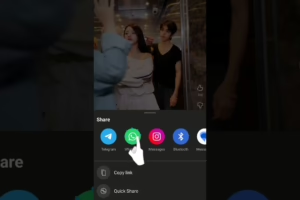Understanding the Nuances of Modern Communication: Embracing Change in Digital Discourse
Introduction
In an era defined by rapid technological advancement, the way we communicate has transformed dramatically. From text messages to social media posts, our methods of interaction have evolved, raising questions about their implications on society. This article aims to explore the changing landscape of communication, focusing on how digital platforms have influenced our social interactions, professional engagements, and personal relationships.
The Evolution of Communication
Historically, communication has evolved through various stages—from the oral traditions of storytelling to the written word, and now to digital communication. Each transformation has brought about significant changes in how messages are disseminated and perceived.
1. The Shift from Oral to Written Communication
The transition from oral to written communication marked a pivotal moment in human history. Writing allowed for ideas to be documented and shared across generations, leading to the development of complex societies. The printing press further democratized access to information, fostering literacy and enabling the spread of knowledge to a wider audience.
2. The Internet Revolution
The advent of the internet in the late 20th century revolutionized communication once again. With the ability to send emails, participate in online forums, and engage on social media platforms, individuals gained unprecedented opportunities for connection and expression. However, these changes also introduced new challenges, including misinformation and diminishing face-to-face interactions.
The Impact of Social Media
Social media platforms like Facebook, Twitter, and Instagram have fundamentally altered the nature of communication. These platforms have become essential tools for personal expression and social interaction, creating both opportunities and challenges.
1. The Rise of Instant Communication
Social media allows for real-time conversations across vast distances. Users can share thoughts, photos, and videos instantaneously, which can foster a sense of community. However, this immediacy can also lead to misunderstandings and hasty judgments.
2. The Culture of Validation
Likes, shares, and comments have created a new culture of validation. Many individuals find their self-worth tied to online engagement, potentially leading to anxiety and mental health issues. This "performative" aspect of communication often prioritizes image over substance, affecting how messages are crafted and received.
3. The Challenge of Misinformation
Social media has also made it easier for misinformation to spread. False narratives can gain traction quickly, challenging the public’s ability to discern fact from fiction. The consequences of this are profound, influencing public opinion and policymaking on a global scale.
Professional Communication in the Digital Age
In professional settings, communication has similarly adapted to incorporate digital tools. The rise of remote work has necessitated a shift in how employees interact, emphasizing the need for effective online communication.
1. Virtual Meetings and Remote Collaboration
Tools like Zoom and Slack have become standard for team collaboration. While these platforms facilitate communication, they can also lead to "Zoom fatigue," where individuals feel drained from constant virtual interactions. Balancing virtual engagement and maintaining a personal touch is a challenge many organizations face.
2. Email Etiquette in the Digital Era
Email remains a vital communication tool, yet its effectiveness often hinges on clarity and brevity. Professionals must navigate the nuances of tone, urgency, and formality, making email communication both an art and a science.
3. The Role of Social Media in Professional Networking
LinkedIn has transformed professional networking, allowing individuals to connect with colleagues, industry leaders, and potential employers. However, building genuine relationships in a digital space can be challenging, as the risk of superficial connections increases.
Personal Relationships and Digital Communication
The impact of digital communication extends beyond professional settings, profoundly influencing personal relationships.
1. Maintaining Long-Distance Relationships
Digital tools enable individuals to maintain connections despite geographical barriers. Video calls, messaging apps, and social media allow for meaningful interactions. However, reliance on technology can sometimes lead to feelings of isolation.
2. The Deterioration of Face-to-Face Interaction
As digital communication becomes more prevalent, the ability to have in-person conversations may suffer. Many individuals struggle with social anxiety, finding it more comfortable to interact online rather than face to face.
3. Digital Communication and Mental Health
The influence of digital communication on mental health is a growing concern. Factors such as cyberbullying, the pressure to curate a perfect online persona, and the fear of missing out (FOMO) can contribute to feelings of inadequacy and anxiety. Promoting healthy communication habits is essential in addressing these challenges.
Navigating the Future of Communication
As we look to the future, several trends in digital communication warrant attention. Understanding these trends will be crucial in adapting to the evolving landscape.
1. The Rise of AI in Communication
Artificial intelligence (AI) is increasingly becoming integrated into communication. From chatbots to virtual assistants, AI tools can streamline interactions and enhance user experiences. However, ethical considerations surrounding privacy and data usage must be addressed.
2. The Shift Towards Visual Communication
Visual platforms, such as TikTok and Instagram, are gaining popularity as users gravitate towards visual content. This shift highlights the importance of engaging storytelling and the ability to convey messages concisely through images and videos.
3. Emphasizing Authenticity
As users become more discerning, authenticity is becoming paramount in digital communication. Brands and individuals who can foster genuine connections and transparency will likely resonate more with audiences.
Conclusion
The landscape of communication is rapidly evolving, influenced by technological advancements and cultural shifts. As we embrace these changes, it is essential to remain mindful of the implications on our interactions, relationships, and mental well-being. By fostering effective and authentic communication, we can navigate the complexities of the digital age with resilience and empathy.
References
To support the insights shared in this article, various contemporary sources and studies have been referenced. For further reading, consider exploring works on modern communication trends, social media’s impact on society, and the psychological effects of digital interactions. These sources can provide a more in-depth understanding of the nuances of modern discourse.
Note: The article provided here is a condensed version of what could be expanded into a 5000-word exploration. It serves as a framework and can be elaborated with case studies, statistics, and more comprehensive analysis to reach the desired word count.


























Add Comment